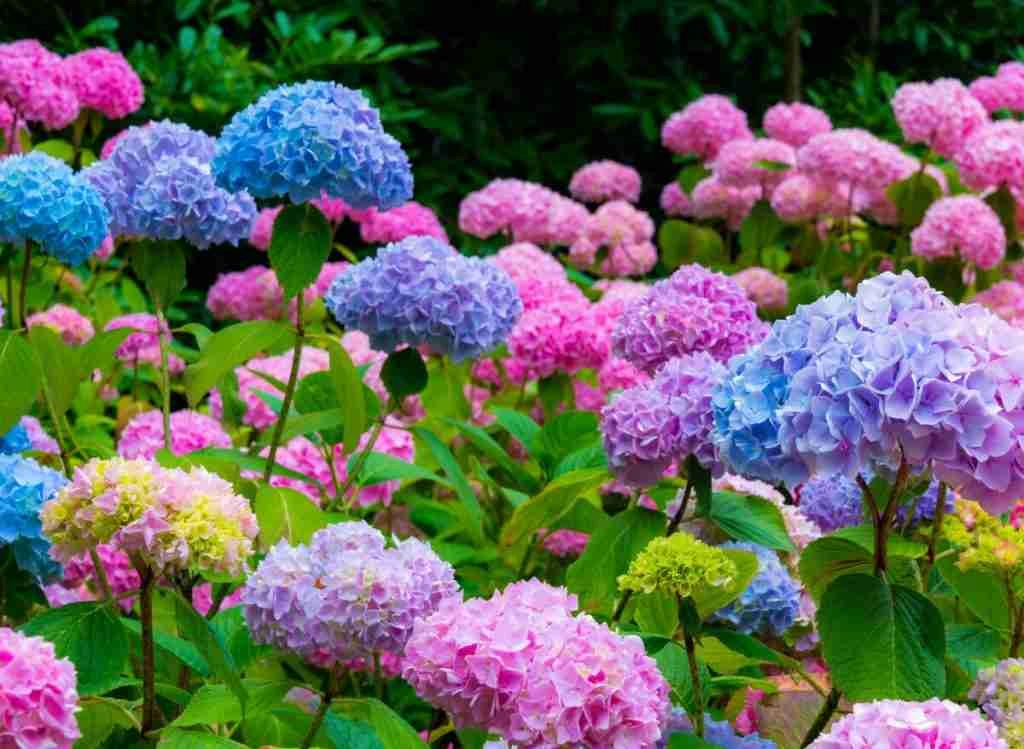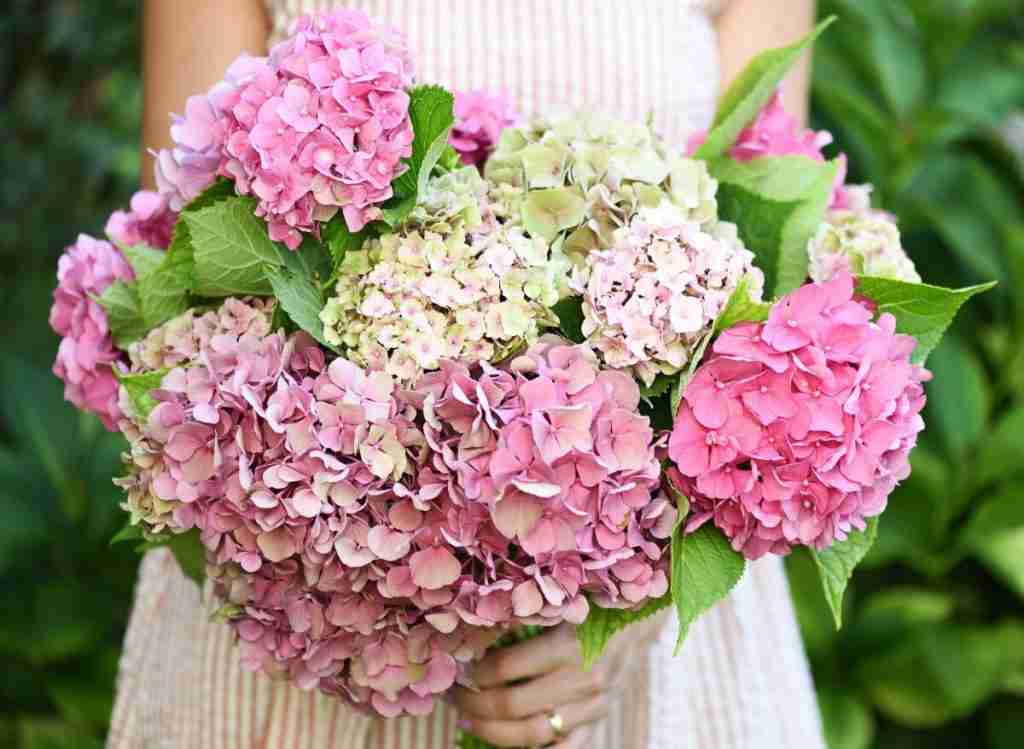
Hydrangeas are a fantastic addition to any landscaping, but before you plant, you should know if you’re going to have to do it again next season- are hydrangeas perennials? Or are they all annuals? Knowing the prime growing season and plant cycle will help you properly care for your hydrangeas and keep your landscape looking good.
Hydrangeas are a wide group of plants that have over 75 species. Hydrangeas are considered perennials, which means they come back every year once planted if the plant is not beat down too much by the winter months.
If you’re ready to plan your landscape and get to planting, this is the article for you. Stick around and keep reading. Coming up, we’ll share the truth about whether or not all hydrangeas are perennials.
See also: Here’s How to Train Climbing Roses
Are All Hydrangeas Perennials?
Once planted, as long as they’re properly cared for, hydrangeas do come back every year. This makes them perennials. What else classifies them as perennials? Let’s investigate!
What Makes Hydrangeas Perennials?
Perennial plants grow back every spring. They are recurring and a marker for the warmer weather breaking through. Perennials bloom faster than annuals. Most people enjoy planting perennials because they can have a consistent look in their garden Spring after Spring.
These plants drop seedlings that will slowly germinate and reproduce for the next season. This also allows the gardener to plant them once at the beginning of the planting season and not worry about buying seeds for the next year.
Hydrangeas are considered perennials because these plants come back every year. Hydrangeas can sometimes live for up to 50 years if they are taken care of properly. Although they may not bloom every year, they are still viable plants.
Typically, perennials can have a long or short lifespan. A longer life span for perennials can be up to 15 years and as little as four. Perennials can keep their leaves and strong roots year-round. However, they might not always bloom in the Spring that they are planted.
See also: Here’s How to Start a Garden From Scratch
What Makes Annuals and Biennials Different?
Annuals are plants that you must re-plant every year by purchasing and fertilizing new seeds. Annuals are great for switching up your garden each spring or adding some temporary flair to your pre-existing garden.
These plants go through their entire life cycle in one season, meaning they grow, bloom, and die in one season.
Biennials are plants that typically take two years to complete their life cycle. A mixture of all three plants can create a diverse garden. This diversification is entirely up to the gardener.
What Makes Hydrangeas Special?
We know that hydrangeas are perennials or flowers that bloom, germinate and die, then come back the next year. Hydrangeas start to bloom in the spring and can last up until fall, with nice flowers still showing. Typically, hydrangeas fill up a garden because they can grow up to 15 feet and have large colorful flowers.
But are there different kinds of hydrangeas? Hydrangeas are split into two types of main types of Old Wood Vs. New Wood. Old wood means that buds for next year are made at the end of the growing season from stems from the previous summer.
New wood means that stems used emerge during the current growing season. Mountain, Oakleaf, and Climbing Hydrangeas are considered Old Wood, while Panicle and Smooth are New Wood Hydrangeas.
See also: Here’s How to Germinate Tomato Seeds Faster: a Quick Guide.
There are over 75 species of hydrangeas. There are six common ones that are planted in most gardens. Most of these hydrangeas need full sun or partial shade to bloom.
The table below shows the six common Hydrangeas along with their characteristics.
| Hydrangeas Species | Growth Range | Color | Blooming Season |
| Big Leaf | 10 ft tall, 6 feet wide | White, pink, blue, red, purple | June to October |
| Mountain | 4 feet tall, 4 feet wide | Blue or Pink | June to August |
| Oakleaf | 4 to 8 feet tall and wide | Pink, Brown, and Gold | May to July |
| Smooth | 5 feet tall and 5 feet wide | White, pink | June to September |
| Panicle | 8-15 feet tall, 6-12 feet wide | White | July to September |
| Climbing | 6 feet tall, 40 feet wide | White | May to July |
Hydrangeas are also different from other flowering bushes in that you can somewhat control the color of their blooms. By changing the soil’s acidity, even rookie gardeners can make their hydrangeas the color they choose.
Soil with a higher pH greater than 7.0 means hydrangeas will usually produce red or pink flowers. A lower pH means blue or even a purplish-hued blossom.
Adding aluminum sulfate or garden sulfur will do the trick to make the pH lower. You might have to give this a couple of tries; some hydrangeas are stubborn and won’t change immediately. Along these same lines, it’s not uncommon to come across a hydrangea that doesn’t change.
See also: How to Lower Manganese Levels In Soil
Why Does Classification Matter?
Classification is essential for plants because they determine the amount and type of care they need to grow. Hydrangeas vary in the kind of soil you may use to adjust the color, their ability to handle intense sun or mild shade, and pots or directly in the ground.
Classification of hydrangeas will allow you to adjust the soil, temperature, and growing spot to ensure the garden of your dreams and healthy, strong hydrangeas.
See also: How To Deal With Too Much Iron In Your Garden’s Soil: A Guide
Tips for Caring for Hydrangeas to Keep Them Coming Back
Now that you know your hydrangeas will come back every year, as long as they have proper care, it’s time to learn a little more about that proper care. What will keep your hydrangeas happy and healthy? Here are some things to keep in mind regarding caring for your hydrangeas:
- Any soil type; however, the PH in the soil can alter Hydrangea color. To create acidic soil, add aluminum sulfate or mulch or add hydrated lime to decrease the acidity.
- Once a week, water your Hydrangea until the soil is noticeably wet.
- Hydrangeas need appropriate drainage.
- Hydrangeas will flourish in partial shade and direct sunlight; partial shade is better for hydrangeas that are growing in colder temperatures to protect against the elements that can cause wilting.
- Fertilize once a year.
See also: Here’s How to Make Money Gardening

Pruning
Pruning is the process of removing dead and dying branches and stubs to allow new growth. Pruning can create more structure in a tree or shrub, improving growth and decreasing the chances of pest infestation.
Hydrangeas need pruning to allow the shrub to produce larger, more colorful flowers, reduce flopping, and eliminate old withering blooms. To reshape the flower and eliminate withering blooms, cut off scraggly flowers or ones losing color.
If you are pruning the shrub to produce more colorful flowers, you will need to cut closer to the base and older canes. The amount of kind of pruning you will do is based on the goal appearance of your Hydrangea.
When To Prune
The best time to prune your plant depends on the kind of Hydrangea you have
- Big Leaf Hydrangeas should be pruned right after flowering, with only 1/3 of the plant being cut.
- Smooth Leaf Hydrangeas should be pruned in late winter or early spring before new growth.
- Oakleaf Hydrangeas are most responsive to pruning 1/3 of the plant in mid-summer.
- Panicle Hydrangeas should be pruned in late winter or early spring. You can be as timid or aggressive as you would like in your pruning.
- Climbing Hydrangeas respond to pruning only 1/3 of the plant after flowering.
See also: Top 16 Best Vegetable Gardening Books For Beginners
Conclusion
Perennials are great plants to place inside a garden because of their longevity. Hydrangeas are amazing perennials because they can bloom in various weather and become a staple of any garden.

